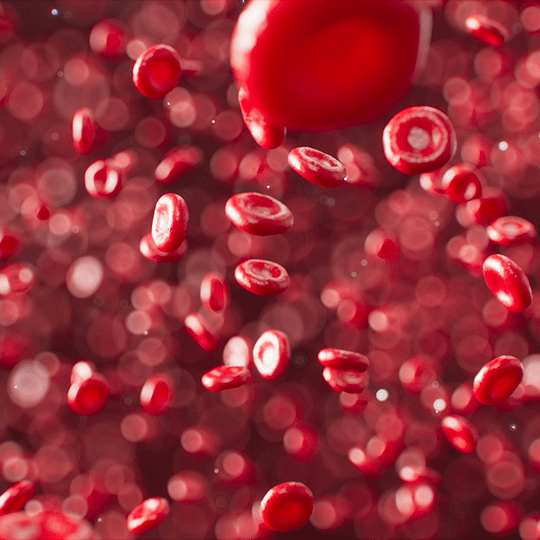Ozempic®
(Semaglutide) Injection: Ozempic® is a brand-name version of the generic medication semaglutide, which is a type of medication called a GLP-1.
- A weekly shot to lose weight
- Helps you feel full faster, longer
- Improves the way your body responds to sugars
- Ozempic is not FDA-approved for weight loss, but may be prescribed off-label if a provider deems it appropriate
Free expedited shipping
Lab tested for quality to promote patient safety
No insurance required
Take advantage of our lowest price at checkout
What are common side effects?
All medications carry a risk of potential side effects. Ozempic's side effects are typically mild and often improve within the first few weeks. When they occur, it's usually when doses are increased, then tend to improve once a steady dose is reached.
How does Ozempic work?
Ozempic works by mimicking the hormone GLP-1, which helps regulate blood sugar levels and appetite. It stimulates insulin release when blood sugar levels are high and reduces the amount of glucose produced by the liver. Additionally, it slows down the rate at which food leaves the stomach, helping to control appetite and promote a feeling of fullness. This combination of effects can aid in weight loss and improve blood sugar control in individuals with type 2 diabetes.
What is Ozempic?
Ozempic is a brand-name version of the generic medication semaglutide, which is a type of medication called a glucagon-like peptide 1 receptor agonist. Instead of that tongue-twister of a name, we call these medications "GLP-1s" for short.


Take Control of Your Appetite, Shed Pounds, Boost Confidence
Discover how Ozempic helps curb cravings and supports healthy, lasting weight loss—so you can boost your confidence and feel energized every day.
Benefits
Reduce appetite and support meaningful, sustained weight loss.

Supports healthy weight loss
Helps reduce appetite and control cravings, making it easier to lose excess weight.

Boosts energy naturally
By enhancing how your body uses nutrients, it can help increase your daily energy levels.

Scientifically proven
Backed by clinical trials demonstrating significant efficacy and results.

Improves blood sugar control
Aids in regulating blood glucose levels, which supports overall metabolic health.

Preserves lean muscle
Encourages fat loss while helping maintain muscle mass for a stronger, healthier body.
Real Stories, Real Results
BMI Calculator
BMI stands for Body Mass Index. It’s a measurement that uses your height and weight to estimate if your weight is in a healthy range for your height.
*BMI doesn’t directly measure body fat and may not accurately reflect health for people with high muscle mass, pregnant women, children, older adults, certain ethnic groups, or those with medical conditions. It shouldn’t be used as the only way to assess health. The BMI calculator does not determine eligibility for weight loss medications. A healthcare provider must evaluate your overall health and history to decide if medication is right for you.
Your BMI






Always quality tested, with proven results



Our medication is conveniently delivered from a state-licensed pharmacy within our network, straight to your door when you need it.
Every batch is fully tested in full chemistry and microbiology labs at the Drug Manufacturer facility to meet strict guidelines and parameters. This provides full confidence in producing industry best results for our consumers through strict compliance with cGMP regulations.
Potency
This test is performed every 3 to 6 months. It confirms that the medication has plus or minus 10% of the appropriate concentration of the active ingredient.
Sterility
This test ensures the medication is free from any contaminants, including bacteria or other pathogens. Every batch is tested and must meet the requirements of USP 797.1.
pH
This test assesses the acid/base balance to ensure minimal irritation upon injection.
Endotoxicity
This test, along with sterility testing, ensures the medication is free of harmful toxins. Every batch is tested for bacterial endotoxins, which may not exceed the threshold limits defined in USP 85.


How it works
Simple Questionnaire
Choose the plan that fits your needs, then complete a free medical intake and health history form for review by a licensed provider.
Provider Evaluation
Our licensed medical provider will review your medical history and determine if the medication is right for you and your needs.
Approved & Delivered
Your prescription gets approved and ships straight to your door in discreet packaging within 3–5 business days.
Good Life Health Guide
Expert insights on health, wellness, and modern care.
Frequently asked questions
Is weight loss more about willpower or diet and exercise?
Effective weight loss isn’t solely about willpower or adjusting your diet and exercise routine. While those factors are important, your body’s biology and genetics also significantly influence weight management. If you’ve faced challenges in losing weight previously, consider exploring additional support through weight loss medications
What are some common mistakes people make when they try to lose weight?
Here are three reasons why weight loss efforts might falter:
- Attempting drastic changes all at once.
- Adopting extreme diets that are difficult to sustain.
- Following generic plans that don’t account for individual biology.
What are some of the common side effects of Ozempic?
All medications carry a risk of potential side effects. Ozempic’s side effects are typically mild and often improve within the first few weeks. When they occur, it’s usually when doses are increased, then tend to improve once a steady dose is reached. Some of the most common side effects include:
- Nausea
- Vomiting
- Upset stomach
- Stomach pains
- Constipation
- Diarrhea
- Heartburn
- Acid reflux
- Belching and gas
- Dizziness
- Headaches
- Fatigue
More severe side effects are rarer but possible. Serious side effects include:
- Thyroid cancer—The FDA has issued its most serious warning (called a BOXED WARNING) that GLP-1s may be associated with a type of thyroid cancer called medullary thyroid carcinoma. So far, this side effect has primarily been seen in laboratory studies using rodents, so the risk to humans has not been determined.
- Pancreatitis
- Gallbladder disease
- Rapid heartbeat
- Severe allergy (hypersensitivity)
- Low blood sugar
- Vision problems (diabetic retinopathy)
- Kidney disease
- Suicidal thoughts or behaviors
Please see the full product safety information page.
What is Ozempic’s dosing?
Ozempic dosing starts out low, then gradually increases over the first few months until a steady dose is reached. If prescribed, your Good Life-affiliated provider will work with you to find the schedule and dosing that’s right for you. As an example, the lowest dose of Ozempic is 0.25 mg once a week and the maximum dose is 2.0 mg once a week.
Do you prescribe Ozempic for weight loss?
Ozempic is not FDA-approved for weight loss. Good Life-affiliated healthcare professionals have the discretion to prescribe a medication off-label if they believe it is an appropriate course of medication for a particular patient.
How does Ozempic help you lose weight?
In addition to stimulating insulin release, Ozempic reduces the amount of sugar released from your liver. Ozempic also slows down the digestion process, so it takes longer for your stomach to empty fully, a process known as gastric emptying. This helps prevent your blood sugar from spiking. At the same time, it keeps you feeling full for longer, which can lead you to eat less and lose weight (Shah, 2014; Phillips, 2022).
Because GLP-1 receptor agonists like Ozempic have led to weight loss in people with type 2 diabetes, researchers have looked into whether they can help treat obesity and lower some of the cardiovascular risks associated with obesity. Indeed, long-term GLP-1 medication usage seems to lower blood pressure and cholesterol (Phillips, 2022). Some adults with obesity may be prescribed Ozempic off-label for weight management. Combined with diet and exercise, Ozempic can help people with obesity lose weight faster (O’Neil, 2018; Wilding, 2021).
How does Ozempic work?
Ozempic is a glucagon-like peptide-1(GLP-1) receptor agonist, which means it mimicsthe GLP-1 hormone produced in your gut. When GLP-1 binds to GLP-1 receptors, ittells your pancreas to release insulin whenever your blood sugar levels get toohigh, which brings your bloodsugar back down (Shah, 2014; Phillips,2022). In type 2 diabetes, your body develops insulin resistance, which allows sugar to build up in the blood.Antidiabetes medications like Ozempic encourage the release of more insulin tokeep blood glucose levels in check (Thota, 2022).
Find answers to common questions about our medication subscriptions and medical review process.


.png)


.png)


-min.png)

